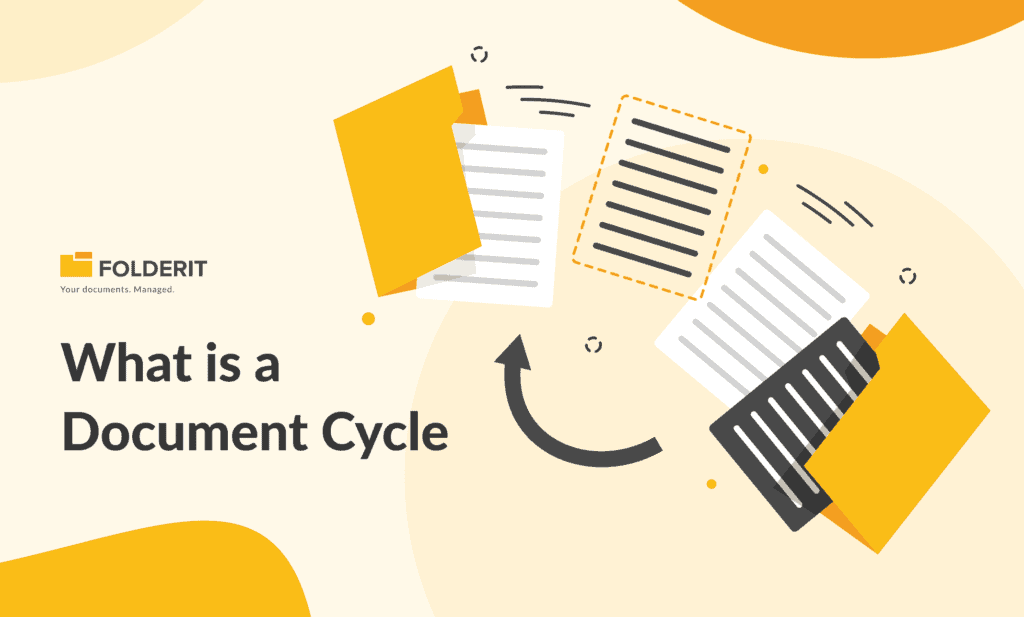The document lifecycle: a concept as fundamental to information management as the blueprint is to architecture. It's the roadmap that guides a document from its birth in the minds of creators to its final archival or disposal.
In this detailed exploration, we venture through each critical stage of this lifecycle, uncovering the pivotal roles they play in shaping the efficiency, security, and compliance of organizational information.
Understanding What is a Document Lifecycle
The document lifecycle is a framework that outlines the various stages a document undergoes from inception to its final disposition. It's a cyclical process that reflects the dynamic nature of documents in a business environment. Effective management of this lifecycle is vital for several reasons:
-
Regulatory Compliance: Ensuring documents comply with legal, regulatory, and policy requirements.
-
Operational Efficiency: Streamlining processes for better productivity and cost-efficiency.
-
Information Security: Safeguarding sensitive data against unauthorized access and breaches.
-
Knowledge Preservation: Maintaining the integrity and accessibility of information over time.
Document Lifecycle Stages
Creation and Capture:
-
Origination: The lifecycle begins with the creation of a document. This can be the generation of a new text, the receipt of an external document, or the capture of information in digital form.
-
Considerations: Key factors at this stage include the intended use, audience, format, and the tools or software used for creation. Documents should be created with an eye towards future accessibility, searchability, and compliance needs.
Distribution and Sharing:
-
Circulation: Once created, documents are often shared or distributed. This involves deciding the appropriate channels and recipients, whether internal team members, external partners, or clients.
-
Control: Managing access rights and ensuring secure transmission are critical at this stage, particularly for sensitive or confidential information.
Utilization and Collaboration:
-
Active Use: This stage sees the document being actively referenced, modified, or utilized for decision-making processes. It’s where the real 'work' on the document occurs.
-
Collaboration: In many cases, documents are collaborative, involving multiple stakeholders. Managing versions and edits, ensuring clarity of changes, and keeping track of contributions are essential aspects.
Maintenance and Update:
-
Upkeep: Regular maintenance is crucial to ensure the document remains relevant and accurate. This may include updating information, revising content, or migrating to newer formats.
-
Backup and Protection: Regular backups and implementing security measures to protect against data loss or corruption are integral to this stage.
Archival and Preservation:
-
Long-Term Storage: When a document is no longer in active use but needs to be retained, it enters the archival stage. The focus here is on preserving the integrity and accessibility of information.
-
Accessibility vs. Security: Striking a balance between keeping archived documents secure and ensuring they can be easily retrieved when needed is a key challenge in this stage.
Disposition and Deletion:
-
Final Disposal: The end of a document’s lifecycle involves its safe and compliant disposal. For digital documents, this means secure deletion. For physical documents, secure shredding or other forms of destruction.
-
Compliance and Record-Keeping: Documenting the disposal process is often required for compliance purposes, especially for sensitive or regulated information.
The Significance of the Document Lifecycle
The document lifecycle is pivotal in ensuring that information is managed in a way that is efficient, secure, and compliant with legal standards. It helps organizations:
-
Maintain Compliance: Adhering to legal and regulatory requirements is essential. The document lifecycle provides a structured approach to ensure compliance.
-
Enhance Efficiency: Streamlined processes within the lifecycle save time and resources, boosting overall productivity.
-
Safeguard Data: Protecting sensitive information and maintaining document integrity is critical for maintaining trust and confidentiality.
-
Facilitate Accessibility: Efficient management of the document lifecycle ensures quick retrieval and effective use of information, which is crucial for decision-making.
Best Practices for Managing the Document Lifecycle
-
Implement a Document Management System (DMS): A DMS automates many aspects of the document lifecycle, ensuring consistency and efficiency.
-
Develop Policies and Procedures: Establishing clear guidelines for each stage of the lifecycle ensures proper handling of documents.
-
Regular Training and Awareness: Educating employees on the importance of document lifecycle management and specific processes is key for effective implementation.
-
Security and Compliance Reviews: Regularly updating security measures and ensuring compliance with legal and regulatory requirements is crucial.
-
Conduct Periodic Audits: Regular audits ensure that document management processes are functioning effectively and efficiently.
-
Leverage Technological Advances: Utilizing advancements like cloud storage and encryption enhances the efficiency and security of managing the document lifecycle.
Conclusion
The document lifecycle is not just a series of steps; it's a comprehensive approach to managing one of the most critical assets in any organization – information. Understanding and effectively managing this lifecycle is essential for ensuring that documents serve their intended purpose while remaining secure, accessible, and compliant. With the right tools, policies, and practices in place, organizations can turn their document lifecycle management into a strategic advantage, fostering better decision-making, improved efficiency, and enhanced compliance.



